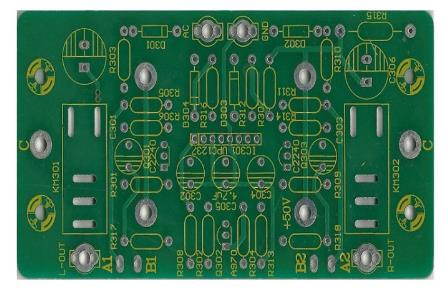PCB design is very important to power supply circuit design, and it is also one of the necessary technologies for novices. In this article, I will share some of the essence of PCB design.
PCB structure design
In this step, draw the PCB surface in the PCB design environment according to the determined circuit board size and various mechanical positioning, and place the required connectors, buttons/switches, screw holes, assembly holes, etc. according to the positioning requirements. And fully consider and determine the wiring area and non-wiring area (such as how much area around the screw hole belongs to the non-wiring area).
PCB layout
1. According to the reasonable division of electrical performance, it is generally divided into: digital circuit area (that is, afraid of interference and interference), analog circuit area (fear of interference), power drive area (interference source);

2. Circuits that complete the same function should be placed as close as possible, and each component should be adjusted to ensure the most concise connection; at the same time, adjust the relative position between the functional blocks to make the connection between the functional blocks the most concise;
3. For high-quality components, the installation location and installation strength should be considered; heating components should be placed separately from temperature-sensitive components, and heat convection measures should be considered when necessary;
4. The I/O drive device should be as close as possible to the edge of the printed board and to the lead-out connector;
5. The clock generator (such as: crystal oscillator or clock oscillator) should be as close as possible to the device that uses the clock;
6. Between the power input pin of each integrated circuit and the ground, a decoupling capacitor (generally a monolithic capacitor with good high-frequency performance is used); when the board space is dense, it can also be added around several integrated circuits A tantalum capacitor;
7. A discharge diode should be added to the relay coil (1N4148 is sufficient);
8. The layout requirements should be balanced, dense and orderly, and not top-heavy or heavy.
Special attention is needed. When placing components, the actual size of the components (occupied area and height) and the relative position between the components must be considered to ensure the electrical performance of the circuit board and the feasibility and convenience of production and installation. At the same time, under the premise of ensuring that the above principles can be reflected, the placement of the components should be appropriately modified to make them neat and beautiful. For example, the same components should be placed neatly and in the same direction, and should not be placed "scatteredly".
This step is related to the overall image of the board and the difficulty of wiring in the next step, so a little effort must be taken into consideration. When laying out, you can make preliminary wiring and fully consider the places that are not sure about it.
Wiring is the most important process in the entire PCB design. This will directly affect the performance of the PCB board. In the process of PCB design, there are generally three divisions of wiring: First, the layout is the most basic requirement for PCB design. If the lines are not connected and there are flying lines everywhere, it will be a substandard board, and it can be said that you have not yet started.
The second is the satisfaction of electrical performance. This is a measure of whether a printed circuit board is qualified. This is after the deployment, carefully adjust the wiring, so that it can achieve the best electrical performance.